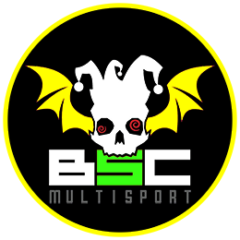I’ve been an athlete for nearly five decades and while there’s quite a lot of published research that shows us an athlete will experience physiological deteriorations with aging, I’d never really experienced a significant performance loss as I got older. Or so I thought. Then one morning in the gym I had an epiphany – I couldn’t do the same things I once did! That realization led me to acknowledge I was aging, and things had changed.
 I’ve learned many lessons over 50-years competing at regional, State, National and International events. Some of the most difficult and painful personal lessons have come in the last few years as a master’s athlete. Based on my experience and what I’ve observed while coaching over the last 38-years, here are the most common mistakes I see age-group athletes make as they begin to age. While these tips are directed towards aging athletes, they are equally beneficial to younger athletes or those just returning to competitive sport after some time away.
I’ve learned many lessons over 50-years competing at regional, State, National and International events. Some of the most difficult and painful personal lessons have come in the last few years as a master’s athlete. Based on my experience and what I’ve observed while coaching over the last 38-years, here are the most common mistakes I see age-group athletes make as they begin to age. While these tips are directed towards aging athletes, they are equally beneficial to younger athletes or those just returning to competitive sport after some time away.
- Follow proven training methods – “Progressive Overload” is a foundation of endurance training. Too many athletes – especially those new to sport, or those that haven’t trained recently – train too hard, too long, or too frequently. Excessive fatigue, burnout, overtraining, illness or injury are often the result. To avoid this mistake, gradually and progressively increase your training duration, frequency, and intensity – in that order.
- You aren’t 25 anymore – As we age, mitochondrial density declines, lean muscle mass decreases and the heart doesn’t beat as fast. As a result, speed and endurance, in general, decrease with age. More importantly, our ability to recover from hard training decreases – recovery takes longer. Training smarter, more balanced intensity with longer recovery, should become the new normal. You aren’t 25 anymore – your training should reflect that reality.
- Not training hard enough – If you are an athlete, especially a master’s athlete, who is on the “pointy-end” and competing for a podium position or greater, you need to be training with intensity. I understand that not all athletes are concerned with winning a medal – most just want to do their best on race day. Research has always shown the same thing for ALL athletes – intensity is the key to going fast. However, intensity brings fatigue, and an increased risk of injury. Go back to my first point about progressive overload and prepare the body for hard work by developing a solid base, get the muscles and joints strong, then progressively add and build intensity.
- Not recovering properly – You don’t get stronger when you are working out. You get stronger while you are recovering. An aging athlete’s muscle simply doesn’t recovery as quickly as a younger athlete’s making recovery even more important. This not only means allowing longer recovery periods after longer or harder workouts, but also employing scientifically proven recovery strategies – active recovery, compression garments, hot/cold baths, proper nutrition, hydration, stretching, and massage.
- Listen to your body – Your body knows when it’s tired, when it has a slight little pain in a joint or muscle that might mean problems ahead. When your training performance is off, or you have the first signs of a cold or other illness – these are all signs you need to rest and recover, or perhaps change your training regimen. Ignore what your body is telling you at your own peril.
- Cut back on training stress when life stress is high – We all have commitments beyond our training – family, work, social. The body’s response to stress from exercise and stress from life is the same. When you’re undergoing high levels of life stress – pressure at work for example – cut back on training intensity, duration, or frequency in that order.
